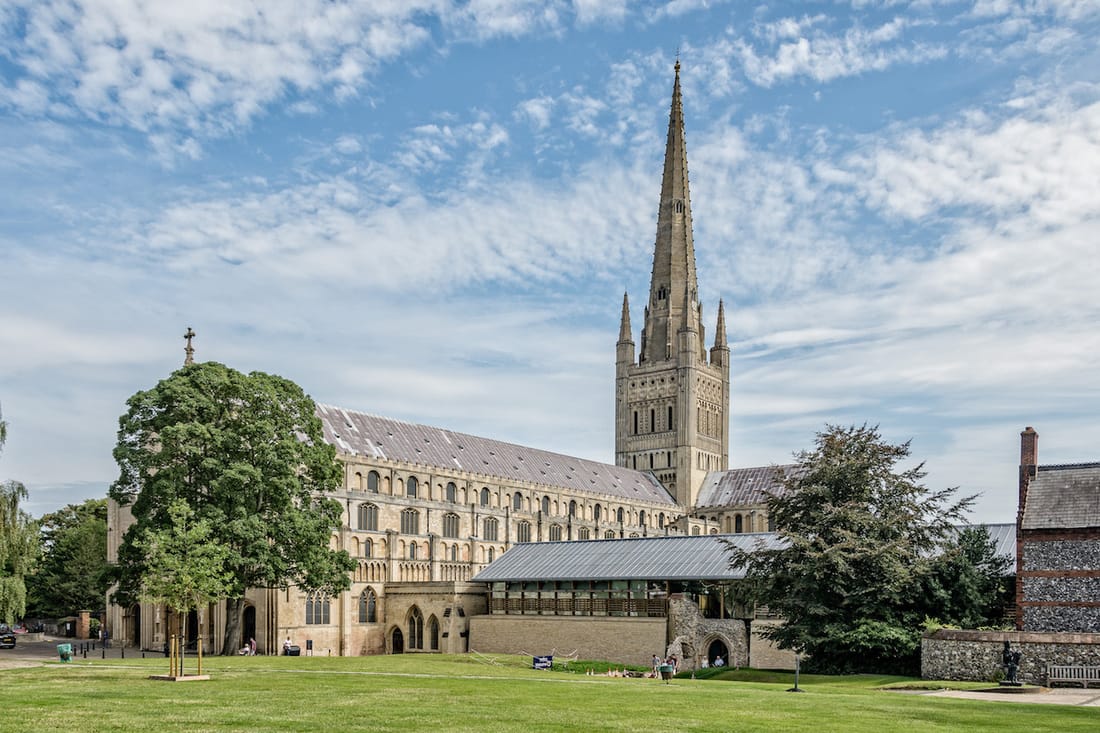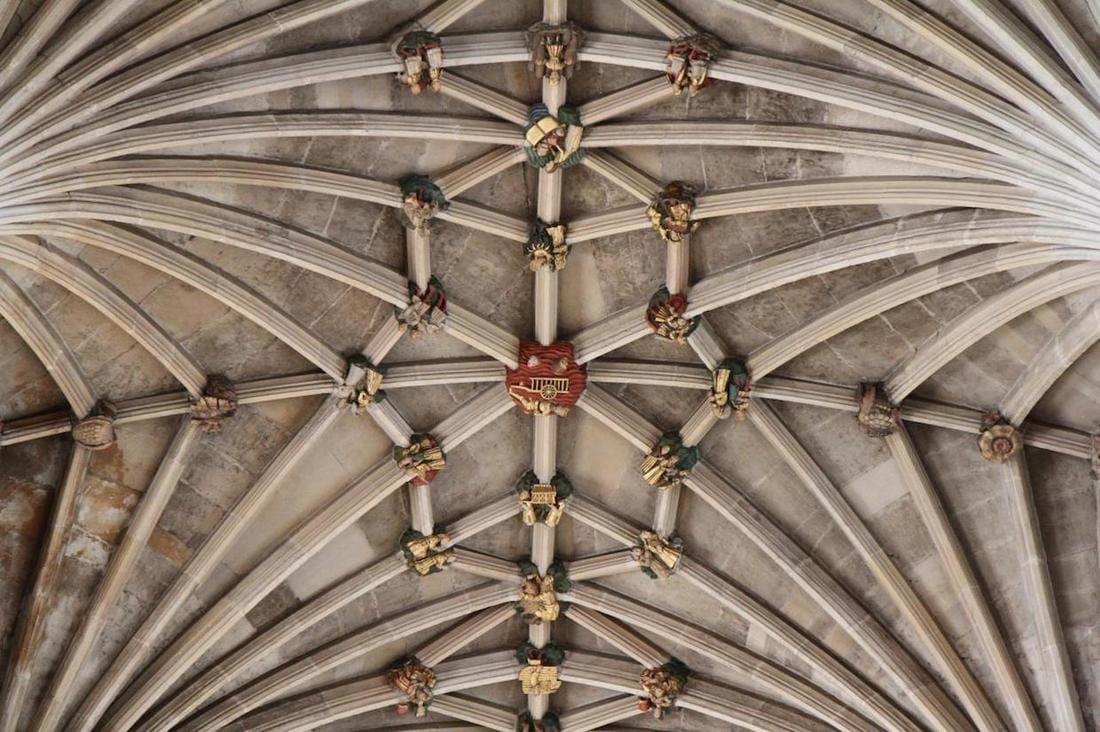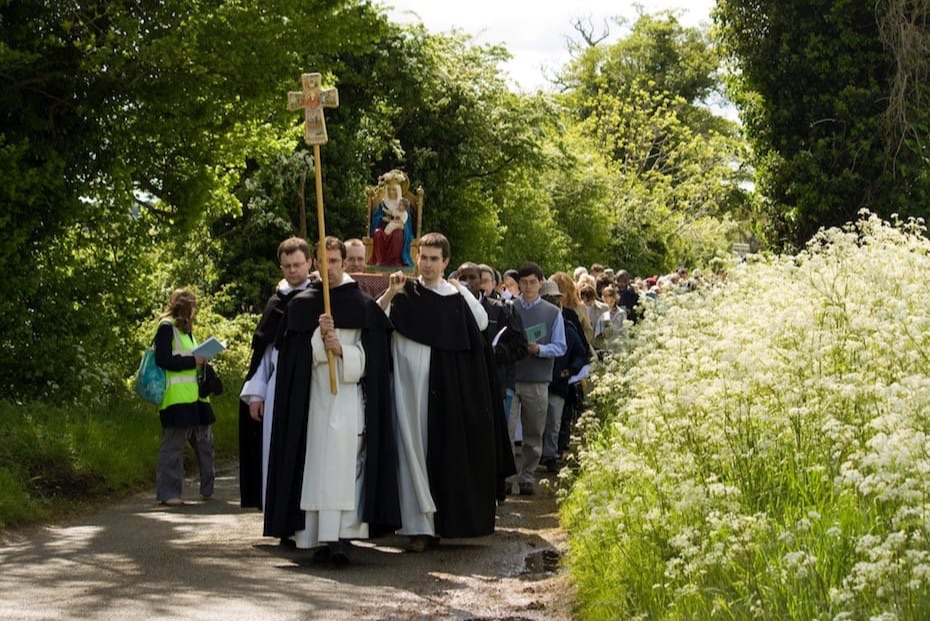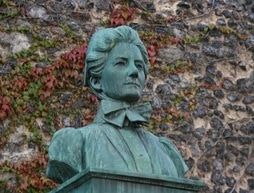EUROPEAN GREEN PILGRIMAGE NETWORK
Norwich, EnglandNorwich Cathedral has stood for more than 900 years as a Christian presence in the heart of Norfolk, England. It serves the Church of England Diocese of Norwich, covering most of Norfolk and part of Suffolk. It is one of the most complete Romanesque churches in Europe.
Founded in 1096 by Bishop Herbert de Losinga, it was a priory of Benedictine monks until the dissolution of the English monasteries in 1538. Although there are no longer any monks, the ethos of this tradition is a continuing influence on Cathedral life. In the early Middle Ages, East Anglia was the most densely populated and wealthiest region of England and until the 18th century the city of Norwich was second only to London. Much of that wealth is evident in the city's 35 remaining mediaeval parish churches and in the more than 600 mediaeval parish churches in Norfolk. Norfolk has been a popular pilgrimage destination since 1061 when Lady Richeldis de Faverches of Walsingham had a vision in which the |
The Church of EnglandBlessed Virgin Mary instructed her to build a replica of the Holy House of Nazareth. The Shrine of Our Lady of Walsingham attracted pilgrims from all over Europe, but it was destroyed and its cult suppressed in 1538.
Since the Shrine was restored by both Roman Catholics and Anglicans in the 20th century, Walsingham has recovered its pre-eminence, being voted in 2003 as Britain’s ‘favourite spiritual place’. In 2013, Norwich joined the Green Pilgrimage Network, launched at Assisi, Italy in 2011, and is also a member of the new European Green Pilgrimage Network. |
Pilgrimage in Norwich and East Anglia
Reviving pilgrimage in East AngliaNorwich Cathedral, as a member of both the Green Pilgrimage Network and the European Green Pilgrimage Network, is committed to recovering the traditions and practice of pilgrimage in East Anglia and to encouraging sustainable spiritual tourism.
|
Edith Cavell TrailIts first pilgrimage trail honours the heroism and Christian witness of Edith Cavell, a pioneering nurse moved by her faith to work in service to others. She was executed in Belgium in 1915 for sheltering well over 200 soldiers from the German occupying forces
|
The Walsingham TrailNorwich Cathedral is working to renew walking pilgrimage to Walsingham, together with Norfolk County Council, the Anglican and Roman Catholic shrines, the Roman Catholic Cathedral of St John the Baptist, and local parishes, landowners and businesses.
|
Glorious and holy Father, give us wisdom to know you,
diligence to seek you, patience to wait for you,
eyes to perceive you, a heart to meditate upon you
and a life to proclaim you; by the power of the
Spirit of Jesus Christ our Lord.
– St Benedict
diligence to seek you, patience to wait for you,
eyes to perceive you, a heart to meditate upon you
and a life to proclaim you; by the power of the
Spirit of Jesus Christ our Lord.
– St Benedict
Edith Cavell Trail
All guests who present themselves are to be welcomed as Christ,
for he himself will say: 'I was a stranger and you welcomed me'.
– The rule of St Benedict, Ch 53:1
for he himself will say: 'I was a stranger and you welcomed me'.
– The rule of St Benedict, Ch 53:1
Walking pilgrimage to Walsingham
|
Norwich Cathedral is also working to renew walking pilgrimage to Walsingham, in partnership with Norfolk County Council, the Anglican and Roman Catholic shrines, the Roman Catholic Cathedral of St John the Baptist, and local parishes, landowners and businesses.
The Walsingham shrine is about 30 miles from Norwich and receives an estimated 100,000 pilgrims every year. The aims of the Walsingham Way project are to:
|
The European Inter-regional funding award means we will be able to work with European pilgrim places and regions, particularly in Scandinavia, to learn from best practice. This includes, for example, best practice in route creation, maintenance, signposting, the generation of local jobs and income, and digital innovation. |
With thanks to Creative Commons photographers. Picture credits, from top, left to right: Norwich Cathedral by Colin-47; Norwich Cathedral by David Nicholls;
Roof detail by Holly Hayes; Walsingham Pilgrimage by Fr Lawrence Lew, OP; Edith Cavell statue by Robert Scarf; Walsingham pilgrimage by Fr Lawrence Lew, OP
Roof detail by Holly Hayes; Walsingham Pilgrimage by Fr Lawrence Lew, OP; Edith Cavell statue by Robert Scarf; Walsingham pilgrimage by Fr Lawrence Lew, OP






